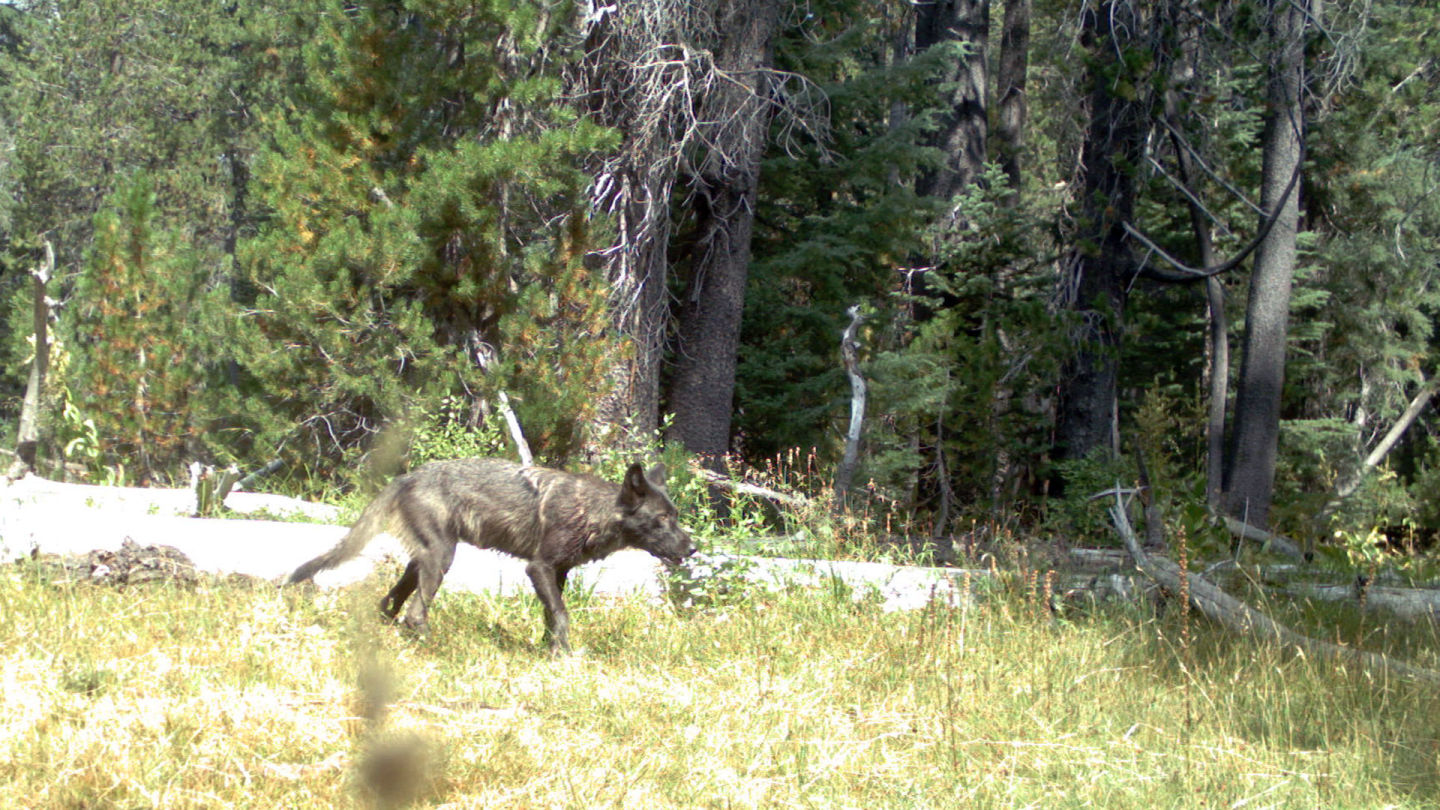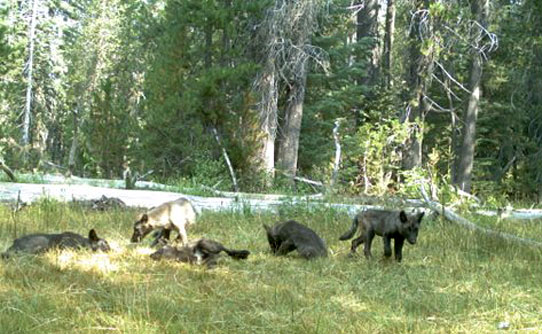
A pack of wolves, including five pups, has turned up in Siskiyou County in Northern California. The pups are especially significant as they’re first documented since wolves were extirpated from the state in the 1920s.
The adults likely came from Oregon, according to California wildlife officials, but are most likely not related to OR7, the lone male who wandered into the state in December 2011 and sparked a heated debate about the return of the predators.
“We’re really excited, if not amazed, at what this species of animal has been able to do,” said Eric Loft of the California Department of Fish and Wildlife. “What we’re most surprised about is about how rapidly wolves have done colonization, if you will, of California.”
The “Shasta pack,” as wildlife officials have dubbed it, was photographed with remote trail cameras and officials are considering putting a radio collar on at least one individual to track its movement.
Howling Success…or Imminent Conflict

